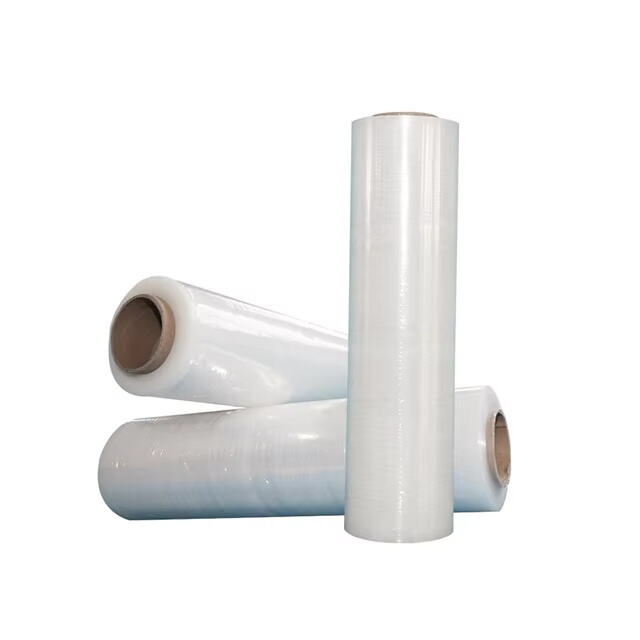Understanding Static Cling in Plastic Film
Basic Science Behind Static Electricity
Static electricity is a fascinating phenomenon that involves the accumulation of electric charge on the surface of objects. This typically occurs when materials rub together, causing electron transfer between them. According to Coulomb's Law, the force between charged objects is crucially influenced by the distance between them, playing an integral role in understanding static electricity. In the specific context of plastic film, static cling happens when two sheets come into contact and then separate, leading to movement of electrons. One sheet of the film ends up with a positive charge while the other acquires a negative charge. This explains the pervasive challenge of static cling in various applications.
Why Plastic Film is Prone to Static Cling
Plastic films are especially prone to static charge accumulation primarily because they are insulators. These materials prevent electric charges from moving freely, creating conditions favorable for static buildup. In industrial and household settings, the common characteristics of plastic films make static cling a recurring issue. The surface roughness and texture significantly influence this behavior; smoother surfaces, for instance, often generate higher cling due to increased contact area and friction. This is why plastic films are frequently associated with static-related challenges.
Common Causes of Static Cling
Material Composition and Surface Friction
The material composition and surface friction of plastics play critical roles in static cling. Different plastics, such as Polystyrene and Polypropylene, are more susceptible to static cling due to their unique molecular structures. These materials tend to trap electric charges as their composition influences surface friction. When these materials rub against one another, the friction increases, binding layers more tightly together, and thereby enhancing static cling. Research further demonstrates that materials with higher surface energy tend to accumulate more static charges, resulting in increased cling issues.
Environmental Factors: Humidity and Temperature
Environmental conditions like humidity and temperature significantly affect static cling in plastic films. Low humidity levels worsen static cling, as dry air lacks the ability to dissipate electrical charges effectively, leading to more frequent cling problems. Meanwhile, changes in temperature can lead to the expansion or contraction of plastic films, altering how tightly they adhere to surfaces. Studies suggest that boosting humidity levels can substantially reduce static electricity, which in turn mitigates cling issues commonly encountered in plastic films.
Effective Static Cling Prevention Techniques
Humidity Control and Surface Conditioning
Managing humidity levels effectively is pivotal in combating static cling, particularly in environments where plastic films are processed or utilized. By maintaining humidity levels between 30-50%, we can significantly reduce static buildup and subsequently minimize cling issues that interfere with the performance of materials like plastic film. Furthermore, surface conditioning techniques offer a practical solution. Applying anti-static coatings or treatments to plastic films modifies their surface properties, disrupting charge accumulation and reducing friction. Introducing ionizers into these environments can also prove beneficial; they work by neutralizing charges that lead to static cling, thereby fostering a stable atmosphere that supports smooth operations and product integrity.
Anti-Static Additives in Plastic Film Production
In the realm of plastic film manufacturing, the incorporation of anti-static additives stands as a proven method for thwarting static cling. These agents, added during production, reduce surface resistivity, effectively resisting cling. Among the popular choices, glycerol monostearate and polyalkylene glycol are notable for enhancing the performance and longevity of plastic films. Their effectiveness lies in the ability to embed these additives within the film, offering a long-lasting solution that withstands diverse applications. Through carefully formulated blends, we ensure that films retain their protective qualities across different environments, making them invaluable in a variety of industrial and logistical contexts.

Practical Tools for Reducing Static Cling
Ionizing Equipment and Grounding Solutions
The use of ionizing equipment and grounding solutions is an effective method for reducing static cling in industrial settings. Ionizing blowers or bars work by neutralizing surface charges on plastic films, which is crucial during production and packaging processes. These devices help prevent the buildup of static electricity, ensuring smoother operations and fewer defects.
In addition to ionizing equipment, grounding solutions such as conductive mats and wire systems play a pivotal role in dissipating accumulated electricity. These grounding tools ensure safer handling and movement of plastic films, making them indispensable in environments where plastic film processing is prevalent. The implementation of these tools has been shown to significantly decrease accidents and product defects caused by static cling, creating a safer workplace and improving product quality.
Static-Dissipative Packaging Materials
Implementing static-dissipative packaging materials is essential to safeguard sensitive electronic components often packaged with plastic films. These specialized materials act as buffers against static electricity, preserving the integrity of packaged products and ensuring their safe transportation. In static-sensitive industries, the adoption of static-dissipative packaging can substantially lower the risk of electrostatic discharge damage.
Research indicates that utilizing these materials can reduce the risk of product damage by at least 50%, making them a vital part of the packaging process. This reduction not only enhances product safety but also reduces costs associated with product returns and warranty claims, streamlining business operations and fostering customer satisfaction.
FAQs About Static Cling Prevention
Can Household Items Reduce Static in Plastic Film?
Household items such as dryer sheets and vinegar can offer an inexpensive, temporary solution to static cling in plastic film. These items have conductive properties that can reduce the charge build-up on the film's surface. While this can be a quick fix for minor static issues during everyday use, experts warn that such methods are limited in their effectiveness. For industrial applications, where static cling can cause serious safety hazards and product defects, more robust and long-term solutions are necessary. Implementing comprehensive strategies with advanced materials and technologies is paramount in these settings.
How to Test Plastic Film for Static Sensitivity
Testing for static sensitivity in plastic films is essential for identifying potential cling issues and taking preventive measures. A simple technique involves rubbing the plastic film with a wool cloth to observe any resultant cling with other objects. This method can indicate a basic level of static sensitivity, though it is considered rudimentary. For more precision, manufacturers can utilize an electrostatic voltmeter to measure the potential difference across the film's surface. Understanding the static sensitivity helps manufacturers create effective strategies to minimize static cling and ensure safer handling of plastic films during production and packaging processes.


